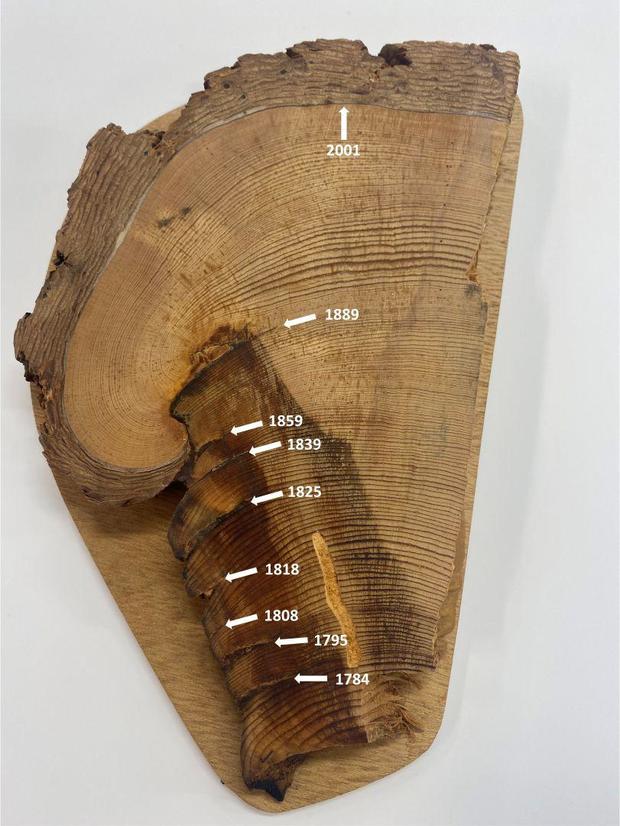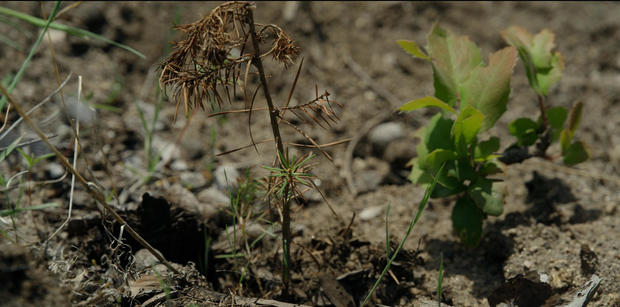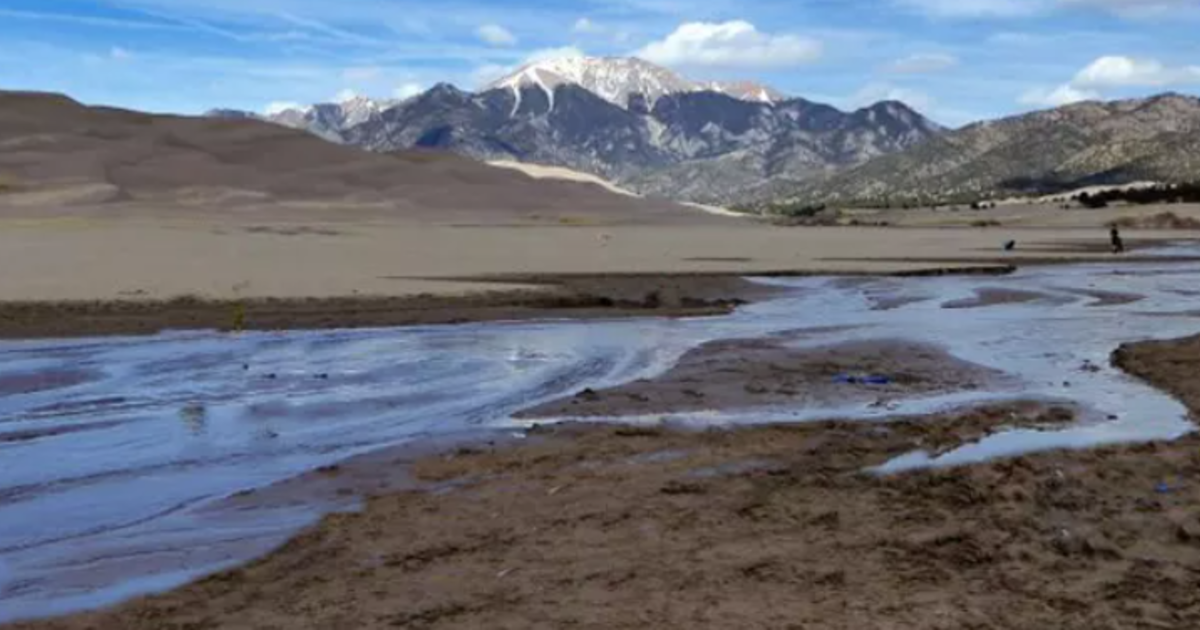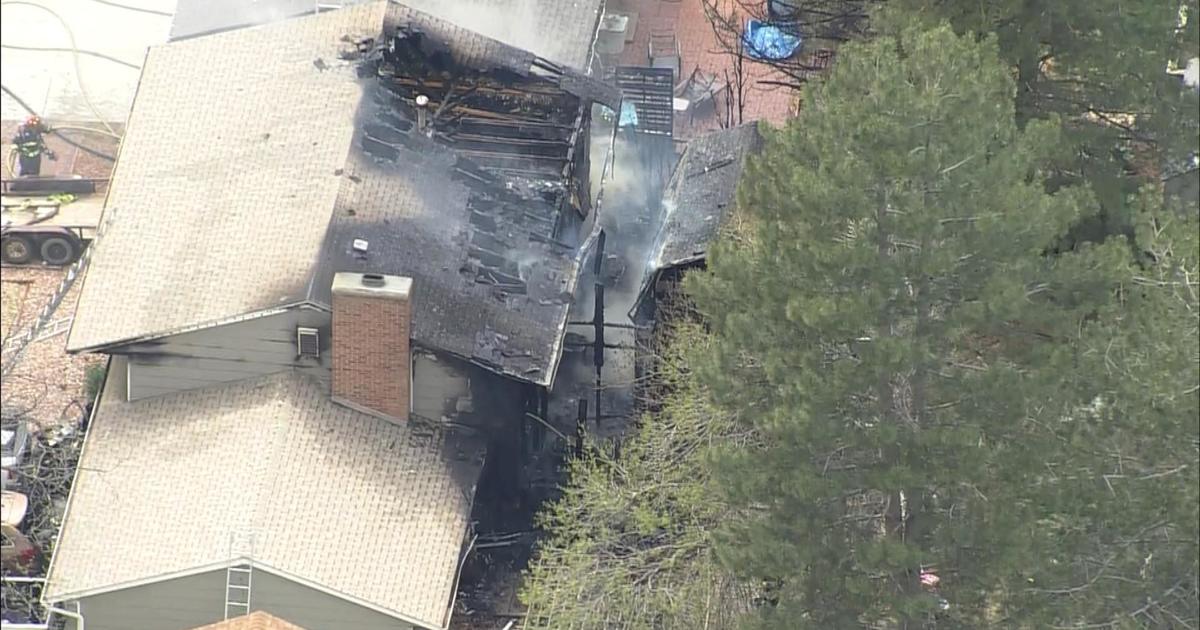A century of fire suppression is worsening wildfires and hurting forests
As parts of the country typically unaffected by wildfires have been blanketed in smoke in recent months, experts are turning to a centuries-old practice as one way to help manage increasingly severe forest fires.
At the root of the problem, experts say, is the longtime policy of fire exclusion: keeping fire out of the forest.
Starting in the late 1800's, for nearly a century, fire suppression was America's national policy, putting out fires as soon as they start. While that successfully reduced the amount of forest burned, over time it led to a buildup of highly flammable dead trees and brush on the forest floor.
Sean Parks, Ph.D, is a research ecologist with the Aldo Leopold Wilderness Research Institute in Missoula, Montana, where they study how fire behaves in the forest. He says that buildup, also known as fuel, is leading to larger, hotter fires.
"Now the fires that we're seeing are killing all or most of the trees," Parks said.
CBS News went to Montana, as part of our "On the Dot" climate coverage, to learn why fires are burning so much hotter and the impact is becoming so much greater.
It wasn't always that way.
In Montana's Bitterroot National Forest, Parks guides us toward fire-scarred trees. By cutting a cross-section of a tree stump, Parks points out how trees can carry scars from long-ago fires that were set every 10 to 30 years by the Bitterroot Salish tribe that lived here.
And yet those trees survived. You can see curls in the wood that show where the tree was scarred and started to regrow around that scar.
Those scars, research shows, are evidence that Indigenous Americans successfully controlled wildfires by regularly setting smaller fires to reduce the buildup of fuel.
After the U.S. removed the tribe from the land and began the practice of excluding fire from the forest, many trees didn't see a fire for a century or more.
In fact, the tree bears no fire scars for 100 years during the policy of fire suppression. All around it, fuel built up unabated during those years, feeding future fires that today burn hotter and are more lethal, Parks says.
Those more severe fires ultimately killed that centuries-old tree, Parks said.
"A lot of these forests are no longer set up well to survive that inevitable fire," said Parks.
Parks says climate change is making that problem worse.
Related: Understanding how carbon is warming the Earth
"There's definitely a relationship between more fire and climate change," Parks said. "Fuels are now drier because of climate change. And when fuels are drier, the fires burn hotter, and they are harder to put out, as well."
Setting good fires to prevent bad fires
The Confederated Salish and Kootenai Tribes in Montana are leaders in putting prescribed fire back into the landscape.
"It reduces the fuel loading that's here right now that naturally wouldn't be here," said Darrell Clairmont, who is responsible for managing the fuel load in the forests on the reservation.
Setting such a fire requires ideal conditions: moderate humidity, low temperature and low wind.
In June, the Confederated Salish and Kootenai Tribes were making final preparations to set a prescribed burn and they invited us to go along. However, the burn had to be canceled after an unexpected rainfall.
Clairmont says ideal burn conditions are getting harder and harder to come by.
"We're used to burning a couple of thousand acres a year, and we probably got this year maybe 300 acres," he said.
Shrinking burn windows are a problem. A study from the International Journal of Wildland Fire, looking at the southeastern U.S., found that "even meeting basic burn criteria (as defined today) will become increasingly difficult over time" because the climate is changing.
In California, for example, the state wants to burn a million acres a year by 2025. But last year only 110,000 acres were burnt.
Seeing the impact of fires on the forest
CBS News also followed research ecologist Kim Davis, with the U.S. Forest Service Fire Sciences Lab in Montana, to see severely burned areas and understand why some forests recover after fires while others struggle.
Twenty-three years ago, the Valley Complex Fire ravaged Montana's Bitterroot Forest at Rye Creek. Today, the signs of destruction remain, with dead tree trunks littering the hillsides. There are few signs of recovery. Davis says that's because when all the trees get wiped out there are no seeds left for regeneration.
"Where we're standing right now is really far away from any living trees that survived the fire," Davis said.
Much of this area has been replanted with seedlings, but many of those seedlings are dying.
Davis says unlike mature trees, which can handle warmer, drier conditions, today's climate makes it hard for seedlings to establish themselves in areas that are warmer than they were 50 years ago.
"It's pretty clear when you come out in some of these areas that we're definitely seeing changes already due to climate change," Davis said.
An analysis by the U.S. Forest Service estimates there are 4 million acres — about the size of Connecticut — of forest land in potential need of reforestation.
But there are bright spots, too.
Nearby, Davis points out a different section of the forest that is recovering. This is a place where the Valley Complex Fire swept through but burned less intensely. As a result, some mature trees survived. Now they provide seeds and shade, allowing seedlings to successfully regenerate.
Protecting mature trees from the impacts of extreme fire, Davis says, plays a crucial role in fostering forest recovery and new growth.
"I love seeing baby trees that are growing. Yeah, it's nice to come to sites that have trees coming back," she said.
Editor's note: This story has been updated to correct where Sean Parks works.





